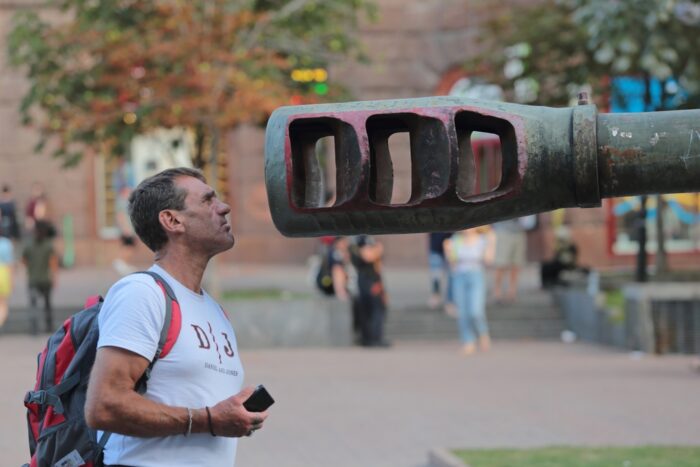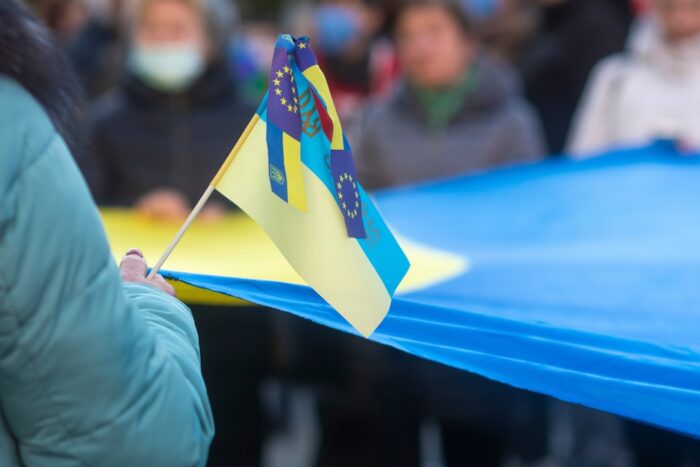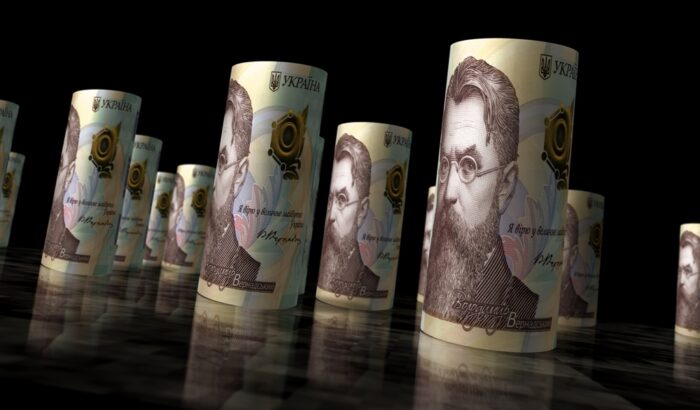The Progressive Post
The clash of narratives and digital powers on Ukraine’s war front
The war in Ukraine can become the one where the two great global digitisation trends and social platforms measure their strength: techno-authoritarianism vs Silicon Valley. With an unprecedented number of online actors taking part in the confrontation, the strategy of sowing a (dis)information chaos in the war in Ukraine is better equipped than ever.
The war in Ukraine is also the first viralised war: broadcast in real time, explained through fragments of images which, in a few seconds, try to reflect threats, fears, heroism and devastation. Military moves have been posted online. Digital cameras and social networks have become the ubiquitous tools of the information battleground. The Washington Post was able to track the movement of Russian troops in Ukraine, during the first weeks of the invasion, using only videos uploaded to TikTok by users who were sharing images of tanks and soldiers in an increasingly viral way. This went to the point that The New Yorker considered it “the first Tik Tok war“. The Chinese app, with more than a billion users – turned into the network of viral choreographies of families during the pandemic, has now become a source of information for hundreds of thousands of young people, who follow the images of the war in Ukraine to the rhythm of their finger sliding across their phone screens. Advancing indiscriminately between emotionality, war scenes and memes, reality and fiction are mixed. As a clear example, one of the videos about Ukraine that has circulated the most on the networks, with more than seven million views, where weary soldiers are seen saying goodbye to their families, turned out to be a scene from a 2017 Ukrainian film.
Tik Tok has become an information battleground but also a source for galvanising support for Ukrainians, and a fertile tool for the proliferation of scam accounts distributing fake content to make quick profit through videos asking for donations to the Ukrainian cause.
If this is, as the French philosopher Edgar Morin affirms, “the first cyberwar in the history of humanity“, it is about to become the first one where the two great global tendencies of digitisation measure their forces: the techno-authoritarianism of both China and Russia on the one side, and the US model of Silicon Valley, where private corporations deploy what Shoshana Zuboff calls “surveillance capitalism”. Long before the invasion, the digital world had already begun to split into a technological confrontation marked by rivalry between China and the United States. The Russian ‘sovereignty’ of the Internet was already built on the censorship of information and the persecution of the political opposition. The Kremlin’s allies controlled VKontakte, the Russian Facebook. Since 2019, a law on ‘internet sovereignty’ already forced all online service providers to pass through the filters of the Roscomnadzor digital censor. However, the invasion of Ukraine has accelerated and deepened the scope of this digital iron curtain that seeks to isolate the Russians from any narrative differing from the official arguments of the Kremlin to build Putin’s casus belli.
The Russian encrypted messaging network Telegram has become a perfect instrument to measure the clash of narratives about the war, as it has become a strong communication tool for both Russians and Ukrainians during the conflict. The platform has recently positioned itself as a useful information tool for journalists in Ukraine, especially for the creation of news channels aimed at a younger audience. Even president Volodymyr Zelensky strongly relies on his official Telegram channel to address Ukrainians and political leaders all over the world, as much as to boost fundraising for his country. Unlike WhatsApp, Telegram does not limit the number of users on the same channel, and there is almost no content moderation, so it has also functioned as a space for mobilising support for Russian troops, as evidenced by the popularity of the “Intel Slava Z” channel.
Even if, according to experts, the military stalemate on the ground can accelerate the cyberwar, in the short term, the Russian strategy remains focused on censorship and narrative control: an amalgam of content creation and orchestrated dissemination and reactions where every different tool has a role to play, from the so-called Russian troll farm – the Internet Research Agency based in Saint Petersburg, to Russian state media, grey propaganda outlets and unattributed pro-Kremlin Telegram channels. At the height of the confusion deployed in Ukraine, an investigation by Pro Publica has shown how there has even been the paradox of using false fact-checkers apparently denying non-existent fakes. Researchers identified at least a dozen videos exposing alleged Ukrainian propaganda campaigns that never took place. According to the experts, the aim is to plant doubt in the face of any future image denouncing the impact of alleged Russian attacks.
US tech giants have also become part of the information battle being fought at the expense of the war in Ukraine. At the request of the European Union, Google, Meta and Twitter decided to take action against accounts linked to the Kremlin to prevent the dissemination of disinformation, and especially limiting access to content from official Russian channels such as RT and Sputnik. Apple removed the RT News app from its store and YouTube blocked the Russian news channel. Announcing a ban on RT and Sputnik broadcasts in the European Union is not only politically risky but also difficult to enforce legally. However, it shows how polarised the information warfare scene is, where censorship and emotionality have become an essential part of the narrative battlefront. In this sense, on March 11, Meta announced that Facebook and Instagram users in Ukraine would be temporarily allowed to call for violence against Russian armed forces in the context of the invasion. As Human Rights Watch pointed out, such policy was never contemplated in Syria, for example, where alleged war crimes, involving Russian forces, were committed.
The big tech platforms have become instruments of the conflict: collecting and sharing data with governments, hacking websites, or controlling information, signing up for international boycotts, deleting accounts from social networks, or acting as instruments of mobilisation, influence, and emotional bias.
Photo credits: Rokas Tenys/ shutterstock.com





